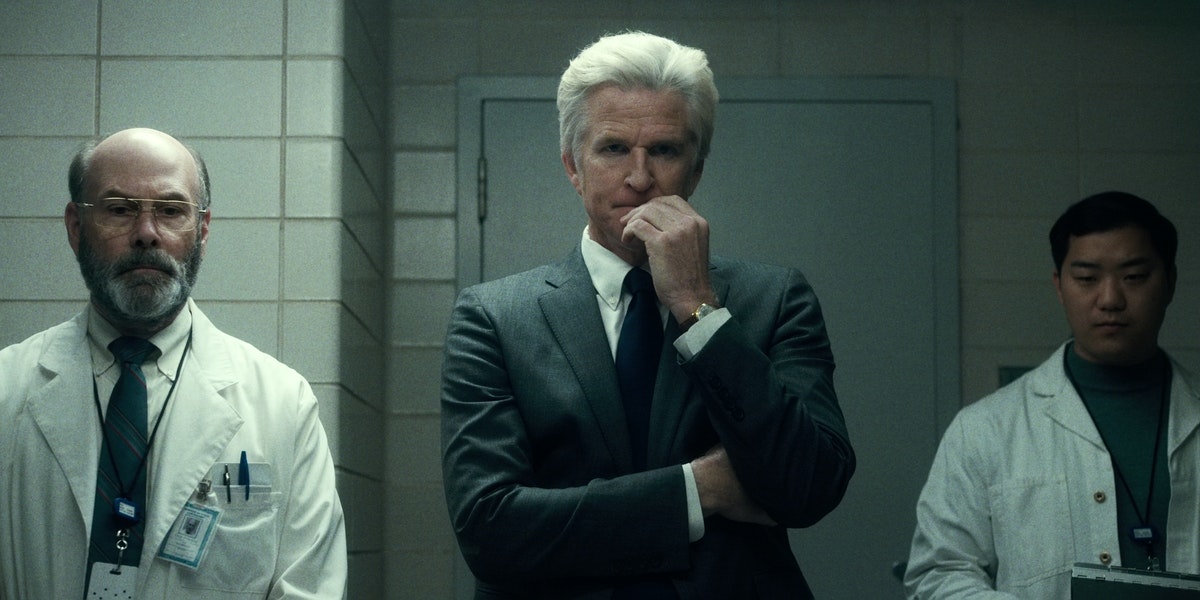Is MKUltra From ‘Stranger Things’ Real? Sometimes The Truth Really Is “Stranger” Than Fiction

No one would mistake the recent Netflix sci-fi series Stranger Things for being based on a true story. Despite its heavy doses of ’80s nostalgia, the parallel dimensions and flesh-eating monsters and telekinetic little girls don’t exactly lend themselves to an air of realism. So it would be easy to assume that, among phrases like the Upside Down and Hawkins Laboratory and Demogorgon and the Vale of Shadows, that whisperings of a secret scientific program called Project MKUltra would be just as fictitious as all the rest. But is MKUltra real? And if so, what is it?
On Stranger Things, the fake-sounding program comes into focus in the sixth chapter, titled ominously “The Monster.” After Chief Hopper and Joyce Byers have joined forces to find out about Hawkins Laboratory’s role in Will’s disappearance, they track down a woman named Terry, who years ago had claimed the government stole her baby. Now virtually comatose, the woman’s sister explained that Terry had participated in Project MKUltra; she was routinely fed psychotropic drugs and placed inside a sensory deprivation chamber in an effort to expand the boundaries of her mind. Unknown to anyone, Terry was pregnant at the time — and after she gave birth, it’s implied that Dr. Brenner confiscated the infant girl, Jane, code-named her 011, and spread the story that Terry had miscarried.
In fact, MKUltra is one of the few things on the show that didn’t come from the fevered imaginations of creators Matt and Ross Duffer. According to a New York Times obituary for Sidney Gottlieb, a chemist involved in the program, Project MKUltra ran for over a decade from 1953 to 1964, during which time the Central Intelligence Agency “gave mind-altering drugs to hundreds of unsuspecting Americans in an effort to explore the possibilities of controlling human consciousness.”
There’s no evidence that the CIA was involved in any baby-napping, but a Senate investigation into Project MKUltra led by Edward Kennedy in the ’70s found that, “In all, the agency conducted 149 separate mind-control experiments, and as many as 25 involved unwitting subjects,” as reported in the NYT obit. “First-hand testimony, fragmentary Government documents and court records show that at least one participant died, others went mad, and still others suffered psychological damage after participating in the project.” Furthermore, “Many of the human guinea pigs were mental patients, prisoners, drug addicts and prostitutes — ‘people who could not fight back,’ as one agency officer put it.”
Why would the government go to such drastic lengths to give people drugs, often without their knowledge? In Stranger Things, Dr. Brenner is seen coaching Eleven through the process of making psychic contact with a Russian agent. (It’s only when the girl inadvertently makes contact with a monster instead that things really start to get weird.) This aspect of the show stays relatively true to the real goal behind Project MKUltra, which was allegedly a defensive program. “The agency began the tests because it was gripped by ‘a great fear’ in the Cold War,” the NYT reported. “It was afraid that the Soviet Union would corner the market on LSD and use it as a chemical weapon or that China would perfect the black art of brainwashing.”
Stranger Things is far from the first TV show or movie to be inspired by the events of Project MKUltra; other works that have riffed on the secret government program have included episodes of The X-Files and Fringe, the Jesse Eisenberg/Kristen Stewart film American Ultra, and both versions of the spy thriller The Manchurian Candidate. It’s easy to see why MKUltra has been such fertile ground for fantastical stories. Very little is still known about the specifics of the program’s operation, since most of the files were destroyed at the behest of CIA Director Richard Helms in 1973, three years before the Senate hearings began.
In an interview on the CIA website, former Director Helms defended his actions: “It was a conscious decision that there were a whole series of things that involved Americans who had helped us with the various aspects of this testing, with whom we had had a fiduciary relationship and whose participation we had agreed to keep secret,” he said. “Since this was a time when both I and the fellow who had been in charge of the program were going to retire there was no reason to have the stuff around anymore. We kept faith with the people who had helped us and I see nothing wrong with that.”
We may never know the full details and true extent of top-secret program; but obviously, the real Project MKUltra didn’t give rise to any literal, flesh-and-blood monsters. However, the fact that a program even remotely similar to the one depicted in Stranger Things ever actually existed proves that often, truth really is stranger — and scarier — than fiction.
Images: Courtesy of Netflix; Giphy (3)
*** This article has been archived for your research. The original version from Bustle can be found here ***


